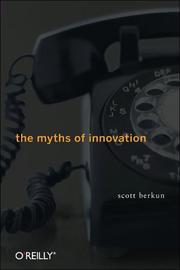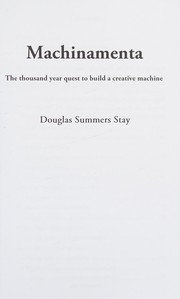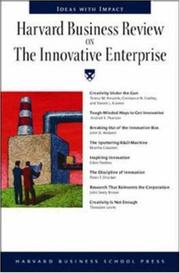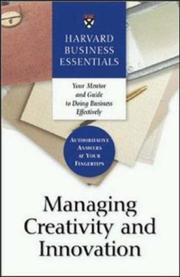The Myths of Innovation by Scott Berkun - ISBN 0596527055 - O'Reilly Media 2007
Motivation
Topic in accord with Seedea:Research/Research and recommended by Dolaur during MBE03.
and recommended by Dolaur during MBE03.
Pre-reading model
Draw a schema (using PmGraphViz or another solution) of the situation of the area in the studied domain before having read the book.
Reading
- 1 The myth of epiphany
- theological explanation for epiphany moments rather than hard work
- "The Greeks were so committed to ideas as supernatural forces that they created an entire group of goddesses, not one but nine, to represent creative power. These nine goddesses, or muses, were the recipients of prayers from writers, engineers, and musicians."
- "Any seemingly grand idea can be divided into an infinite series of smaller, previously known ideas."
- "unlike a puzzle, the universe of ideas can be combined in an infinite number of ways, so part of the challenge of innovation is coming up with the problem to solve, not just its solution. The pieces used to innovate one day can be reused and reapplied to innovate again, only to solve a different problem."
- quoting Mihaly Csikszentmihalyi's book, Creativity: Flow and the Psychology of Discovery and Invention
- "Some workaholic innovators tweak this [breaks with which the change of activity pays of] by working on multiple projects at the same time, effectively using work on one project as a break from the other."
- "Edison, Darwin, da Vinci, Michelangelo, and van Gogh all regularly switched between different projects, occasionally in different fields, possibly accelerating an exchange of ideas and seeding their minds for new insights."
- quoting Dean Simonton, cf my notes on his Origins Of Genius
- quoting Vannevar Bush article, As We May Think
- "The big ideas are a small part of the process of true innovation."
- quoting Peter Drucker, Innovation and Entrepreneurship
- 2 We understand the history of innovation
- "we're biased by what we can't see."
- like the survival bias described in Quantitative Trading or even evolution in general, when we consider phylogenies mainly thanks to what "succeed"
- "Without at least imagining the missing dimensions to the stories, our view of how to make things happen in the present is seriously compromised."
- quoting Howard Zinn's A People's History of the United States
- quoting Edward Carr and mention of Wikipedia:historiography

- "there's no greater dispelworthy myth in the history of innovation than the idea that progress happens in a straight line."
- Figure 2-5 "The tree of competing innovations" and Figure 2-6 "At best, timelines show only one path of the full tree of innovation history"
- 3 There is a method for innovation
- see also Wikipedia:Paul Feyerabend
 's Wikipedia:Epistemological anarchism
's Wikipedia:Epistemological anarchism and Wikipedia:Dada
and Wikipedia:Dada or Dadaism
or Dadaism
- "Innovating comes at a price: it might be money, time, sanity, friends, or marriages, but there will definitely be one."
- simplified categorization
- the 8 challenges innovations confront
- Find an idea, Develop a solution, Sponsorship and Funding, Reproduction, Reach your potential customer, Beat your competitors, Timing, Keep the lights on
- Finding paths of innovation
- Self-knowledge, Be intense but step back, Grow to size, Honor luck and the past
- 4 People love new ideas
- quoting Paul C. Lauterbur "you can write the entire history of science in the last 50 years in terms of papers rejected by Science or Nature."
- "We confuse truly new ideas with good ideas that have already been proven, which just happen to be new to us."
- "[Innovation] asks for faith in something unknown over something known to be safe, or even pleasant."
- quoting Niccolo Machiavelli
- quoting Howard Aiken "Don't worry about people stealing an idea. If it's original, you will have to ram it down their throats."
- "the entrepreneur, whether she's wealthy or happy living on ramen noodles, must eventually convince one group of people—customers—of the merit of her ideas. And if she doesn't have enough money to support her new ideas, or her family refuses to eat canned chili for the third straight month, she'll need to convince a second group—investors." as discussed with Sylvain on time vs. available resources
- five factors that define how quickly innovations spread by Everett Rogers
- Relative advantage, Compatibility, Complexity, Trialability, Observability
- 5 The lone inventor
- "Each [innovation] is made up of threads and relationships that don't separate easily or yield simple answers."
- "[Simultaneous invention is] common because innovations demand prerequisite knowledge"
- "Wise innovators—driven by passion more than ego—initiate partnerships, collaborations, and humble studies of the past, raising their odds against the timeless challenges of innovation."
- 6 Good ideas are hard to find
- "The difference between creatives and others is more attitude and experience than nature."
- "Our unique advantage on this planet is the inventive capacity of our minds."
- "We reward conformance of mind, not independent thought, in our systems—from school to college to the workplace to the home—yet we wonder why so few are willing to take creative risks."
- cf Understanding Power by Noam Chomsky, 2002, page236 : "if he got a C in a course, nobody cared, but if he went to school three minutes late he was sent to the principal's office -and that generalized. He realized that what it meant is, what's valued here is the ability to work on an assembly line, even if it's an intellectual assembly line"
- cf Ken Robinson says schools kill creativity TED.com 2006
- cf Wikipedia:Systemic bias

- "Filmmakers, painters, inventors, and entrepreneurs describe their work as a search: they explore the unknown hoping to find new things worth bringing to the world."
- cf the The "P vs. NP" Problem: Efficient Computation, Internet Security, and the Limits of Human Knowledge by Avi Wigderson, Institute for Advanced Study 2008 assimilating creativity to a search problem saying "If P=NP, we have fast automatic finder. <<Creativity>> can be efficiently automated. " min36
- intellectual research as the last frontier now that we understood we live on a sphere and that our exploration of the known universe is first reacher through models before being physically explored
- 7 Your boss knows more about innovation than you
- "Talent is only as good as the environment it's in."
- "Too much idealism, and the work never ships—not enough, and little change is brought to the world."
- "The difference between success and failure is most often relentlessness, not talent or charisma (though those help). "
- Steve Jobs "I'm convinced that about half of what separates the successful entrepreneurs from the non-successful ones is pure perseverance. Persuasion is a skill; if sufficiently motivated, anyone can improve."
- Alain Connes also mentioned perseverance as maybe the most important skill for a young mathematician
- 8 The best ideas win
- "Looking at history, here are seven factors that play major roles:"
- Culture, Dominant design, Inheritance and tradition, Politics: who benefits?, Economics, Goodness is subjective, Short-term vs. long-term thinking
- "the most successful innovations are not the most valuable or the best ideas, but the ones that appear on the sweet spot between what's good from the expert's perspective, and what can be easily adopted, given the uncertainties of all the secondary factors combined. "
- 9 Problems and solutions
- "Discovering problems actually requires just as much creativity as discovering solutions."
- Palm Pilot prototyping by Hawkins and his actual faked usage during real meetings
- "He carried it around with him to all his meetings, pretending to use it as if it were the finished product."
- "In his words, <<An essential part of innovation is to envision the new product or service. You have to use it and experience it before it is designed and built.>>"
- "while serendipity has a starring role in innovation, it's what people do with the chance encounter that matters, and not the chance discovery itself."
- 10 Innovation is always good
- "This is an essential paradox of innovation: no one knows, not even the inventors, how their creations will impact the world until they are used."
See also
Overall remarks and questions
- Figures 2-5 and 2-6 of Chapter 2 could make one wonder if visualization like the pressure tree presented during Evolution Aujourdhui could be used to model the different competitive landscapes
- interesting A.2. Ranked bibliography
- "Every note I took from a book counted as one point and the references are listed in ranked order." resulting in the following top 5
- 82, Innovation and Entrepreneurship, Peter Drucker
- 67, How Breakthroughs Happen: The Surprising Truth About How Companies Innovate, Andrew Hargadon
- 55, Diffusion of Innovations, Everett M. Rogers
- 55, The Engines of Our Ingenuity, John Lienhard
- 52, Creativity in Science: Chance, Logic, Genius, and Zeitgeist, Dean Keith Simonton
- could be interesting for Seedea:Research/Bibliography#ToDo

Synthesis
So in the end, it was about X and was based on Y.
Critics
Point A, B and C are debatable because of e, f and j.
Vocabulary
(:new_vocabulary_start:)
new_word
(:new_vocabulary_end:)
Post-reading model
Draw a schema (using PmGraphViz or another solution) of the situation of the area in the studied domain after having read the book. Link it to the pre-reading model and align the two to help easy comparison.
Categories
Back to the Menu
Other read books linking to the TheMythsOfInnovation page :
Back to the Menu
 Fabien Benetou's PIM
Fabien Benetou's PIM









